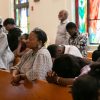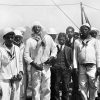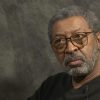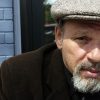By Dedrick Asante-Muhammad
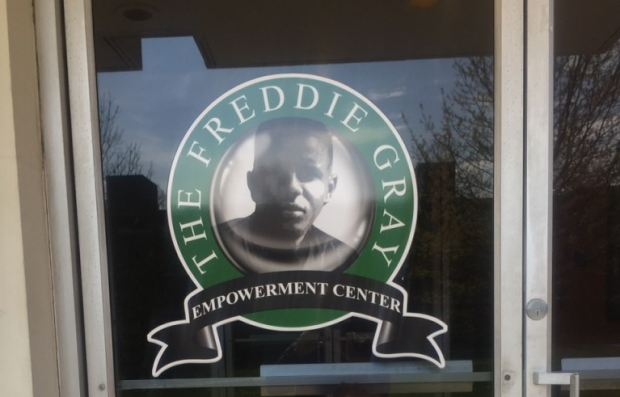
Above Photo: From Inequality.org.
Note: It is too soon to say that the April 2015 uprising in Baltimore being remembered this week has faltered. During the first year, the mayor decided not to seek re-election as did six members of the city council and the police chief resigned. The primary elections on April 26th are likely to produce six to nine new Democratic Party nominees for the city council. The likely mayoral nominee will Catherine Pugh, a Democratic Party insider, supported financially by developers and corporate interests and a three term state senator who currently serves as the Majority Leader in the senate and has served in their leadership since 2008.
If the Democrats win in November it will be fifty years of mayors from the Democratic Party. The Council has also been dominated by the same party with an all Democratic City Council for over 60 years. Baltimore is a one-party city and it has led to a downward spiral for generations on almost every measure. While Baltimore will change the names of people in various positions of government, if one party rule continues in November, they will merely be new parts in the Democratic Party machine. The machine will keep running smoothly, even if the city continues its downward spiral, as the Democrats have put forward no new ideas in the primary campaign, just promises to do more of the same better. If so, this is not good news for the long-term impact of the 2015 rebellion.
However, there is an undercurrent growing. Political organizing in the city is developing. This is a slow, multi-year process and the results may not be seen for years. But, groups are planning a campaign to organize Baltimore’s 250 communities, like Stand Up BMore (Popular Resistance is a member). Another coalition that came out of the uprising, Bmore United For Change, is seeking to build “authentic, grassroots power in our communities.” These are just two examples of the kind of new community organizing that is taking place. It will be this long-term community organizing directed toward building political power at the community level that will create the kind of people power that could change Baltimore.
New ideas are also being pushed forward. One of the three Baltimore Green Party mayoral candidates, Joshua Harris, is putting forward a transformational agenda to shift wealth through a Baltimore City Public Bank, participatory budgeting at the community level, land trusts to give community control over development and housing prices, a new green energy system where homeowners and business owners produce their own energy and much more. It is too soon to say whether his campaign will develop the momentum needed to overcome the machine, but if it does, it could bring the uprising into the November election. These ideas are also being pushed forward by community organizations like Baltimore Activating Solidarity Economies. These are just some organizations of many doing work, that may build into a dominant strain of thought and mobilization in Baltimore. KZ
This April marks the one-year anniversary of the 2015 Baltimore rebellion and the 48th anniversary of the Baltimore rebellion of 1968. The 1968 rebellion started on April 6 and lasted for over a week, resulting in six deaths, 700 injuries, 5,800 arrested, and, in today’s dollars, nearly $80 million in damage. The Baltimore rebellion of 1968 reflected a nationwide phenomenon, the urban black poor taking to the streets in rage over the assassination of Dr. Martin Luther King Jr.
Forty-seven years later, Baltimore has become an industrial city in a post-industrial world, one of the many American cities that have erupted in protest over the death of young African-Americans in police custody.
But the 2015 insurrection, sparked by the arrest and killing of Freddie Gray, unfolded on a much smaller-scale than its 1968 counterpart, thanks in part to the defensive posture of the police department ordered by the mayor’s office. The “riot” only lasted the night, with about 250 people arrested and no deaths.
On April 4, 2016, the anniversary of the murder of Dr. King, I had a series of interviews for my Race and Wealth Podcast, talking with Baltimore residents who had either been in the middle of the rebellion or had been working with those who most regularly face the never ending violence of living in poverty. The death of Freddie Gray and the city’s reactions to that death, the interviews made clear, both sit deeply rooted in the history of Baltimore.
The standard narrative of our times holds that the civil rights movement brought racial equity to the United States. But those actually active in the civil rights movement knew that ending segregationist laws in the South would be just one step in the long journey needed to dismantle white supremacy.
“The first phase had been a struggle to treat the Negro with a degree of decency, not of equality,” Dr. King explained. “When Negroes looked for the second phase, the realization of equality, they found that many of their white allies had quietly disappeared.”
In 2016, the United States continues to fail to implement the second phase of the civil rights movement.
Dr. King noted during the last few years of his life that “I have felt my dreams falter as I have traveled through the rat-infested slums of our big city ghettos and watched our jobless and hopeless poor sweltering in an air-tight cage of poverty in the midst of an affluent society.”
The Freedom Budget called for a minimum wage worth about $14 an hour today, affordable medical care, and decent housing for all.
In the late 1960s, Dr. King and other activists in the black freedom struggle came together to support an economic proposal that everyone from Stokely Carmichael, the prince of Black Power, to the NAACP agreed saw as necessary to bridge the nation’s racial inequality. This proposal, the Freedom Budget, emerged in 1967.
The Freedom Budget called for full employment at a time when African Americans had twice the unemployment rate of whites, a disparity that still persists to this day. The Freedom Budget called for a minimum wage that would equal about $14 an hour today, affordable medical care, and decent housing for all. The Freedom Budget also recognized the negative impact of a environmental pollution that was disproportionately affecting African Americans.
But all these economic demands of the civil rights movement would in large part never be implemented. Dr. King would be assassinated, and his Poor People’s Campaign ended in defeat barely six months after his death.
The murder of Dr. King symbolizes the defeat of the civil rights movement and the failure to attain the socio-economic demands of the second phase of the movement. The death of Freddie Gray and the protests that his plight helped to inspire should serve as a reminder that the nation, even nearing the end of the second term of the nation’s first black president, has failed to take the necessary and challenging economic steps to bridge the racial inequality gap.
The contemporary 99% and Black Lives Matter protests echo the long struggle for a nation that truly provides economic opportunity for all.
“There is nothing new about poverty,” as Dr. King noted a few days before his assassination. “What is new is that we now have the techniques and the resources to get rid of poverty. The real question is whether we have the will.”
Sadly, the nation has lacked that will for the almost 50 years since Dr. King’s death. A year after the death of Freddie Gray, the nation still has lacks the will to comprehensively address racial economic inequality.









